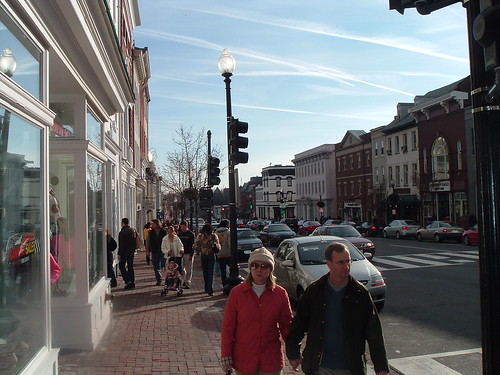Urban Goods Movement and Urban Form
Until World War II, raw materials entering urban transportation areas
were usually carried by railroad to near-in factories. Finished products not
consumed locally then left by rail. Goods for local consumption also came by
rail to warehouses near the downtown area. Distribution was at first by
horse-drawn vehicles and later by small truck to nearby retail outlets. Now the
outward explosion of cities and the motor truck have changed all this. Far fewer
rail deliveries go to close-in factories or warehouses. In fact, in some
cities rail lines and their downtown terminals have been abandoned. Instead,
rail roads and, increasingly, heavy trucks deliver goods originating elsewhere
to factories or terminals located in outlying areas. Such products as now enter
the close-in areas are first transferred to smaller, more easily maneuverable
vans and trucks for delivery. But this is often difficult. At the same time, outlying shopping centers have
become more competitive as costs of serving them with goods from other areas or
outlying warehouses are lowered. In sum, change in the costs of moving freight
and other goods in urban areas has been a strong force in suburbanizing.
cities. And this may be a major obstacle to efforts to make the cities more
compact.

Title Post: Urban Goods Movement and Urban Form
Rating: 100% based on 99998 ratings. 5 user reviews.
Author: aditya
Rating: 100% based on 99998 ratings. 5 user reviews.
Author: aditya
Most Read Article
- Factors Affecting Installation Plan for Traffic Signs
- FUTURE DEVELOPMENTS IN HIGHWAY TRANSPORTATION part 2
- Scary truck crash - Disastrous highway accident caught on tape
- A plot of the intersection of Crossroads (Priority Intersections)
- FUTURE DEVELOPMENTS IN HIGHWAY TRANSPORTATION part 1
- Operating Urban Transportation Engineering - Part 8
- The Past and Present Situation in Urban Transportation Engineering
- Batch Hot Mixture Asphalt Plant (PART 3)
- Terms of Traffic Signs
- Off-street parking Fasilities.











ugg sale
nike kd 6
mbt shoes
gucci handbags
michael kors outlet online
manolo blahnik shoes
jimmy choo shoes
nike shox
ugg boots sale
ugg uk
burberry outlet
uggs sale
nike free 3
isabel marant
dolce gabbana outlet
nike air max 95
tory burch outlet online
pandora charms
tory burch outlet
dolce gabbana outlet
tory burch outlet online
kevin durant shoes
nike uk
ysl shoes
clarks shoes
louis vuitton uk
canada goose jackets
ugg uk
fitflops sale
kevin durant shoes
ugg sale
pandora jewelry
gucci outlet